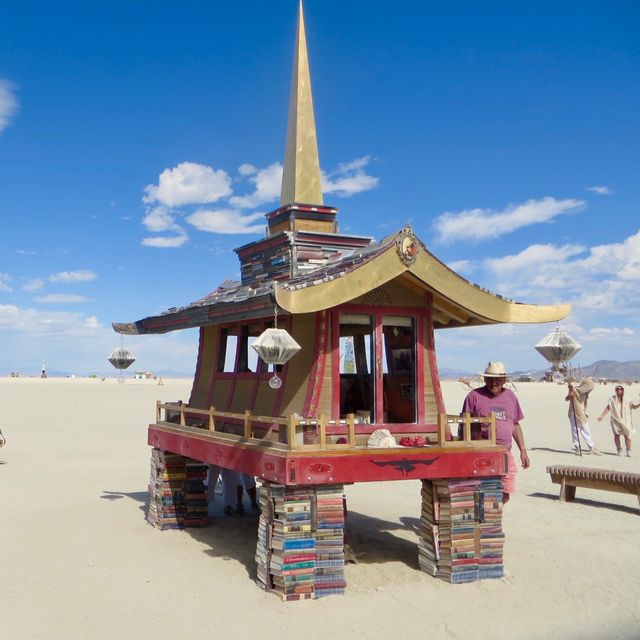One Hundred Eight Books
Oakland, 2019

Every year, in preparation for the Burning Man gathering in Nevada’s Black Rock Desert, a chosen architect gets to design the Temple: a phantasmagorical sanctuary dedicated to love, loss, and memory. Towering above the alkaline dust of the ancient playa, the Temple is traditionally made of reclaimed wood. Despite its humble origins, it briefly ranks among the most beautiful structures on Earth. For on the final day of the event—as tens of thousands of participants watch in silence—it is consumed by flames.
I’ve long imagined designing the Temple, using a different form of recycled wood: the books that have touched our lives. All of them: Good Night Moon and chemistry textbooks, spy thrillers, Harry Potter novels and celebrity memoirs, Mexico guidebooks, The Joy of Cooking and I, Robot, cheesy bestsellers and signed first editions, art books and coffee table tomes, even the sad books we began but never finished. For many of us, our life sum of books would number in the thousands.
Of all the objects in this volume, books are the easiest to reproduce. There is almost no real need of a hard copy any more, although we do live in a shoulder season where actual, physical books make good gifts and remain symbols of our proclivities, education, intelligence, and taste.
There is no backstory linking the 108 books I have chosen to give away. They have been assembled randomly, and will be dispatched in kind. Together, they represent a narrow slice of a lifetime’s worth of curiosity, entertainment, and intention. Some I sincerely meant to read—like The Accidental Fundraiser and Don Quixote. There are science fiction anthologies and travel narratives, memoirs and novels. Others (Flavius Josephus, Zombies on Kilimanjaro) were gifts. Many (The Merck Manual, Merriam Webster’s Encyclopedia of Literature) have been made obsolete by the Internet.
Larry Harvey, the visionary co-creator of Burning Man, died in April 2018. In 2019, artist Dana Albany built a memorial pagoda to Harvey on the Black Rock playa. It rested atop four pillars of books—a tribute to the founder’s identity as a devoted bookworm.
If I were to design a Temple of my own, using the towers of books that have passed through my hands, what might it look like? I think immediately of Gaudi’s Sagrada Familia: surreal yet coherent, sacred but irreverent, and slouching endlessly toward completion—the final finial topped by this book itself.
